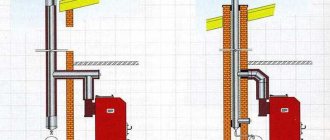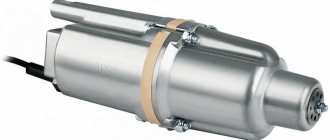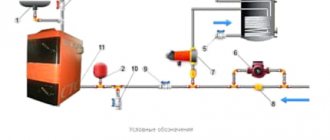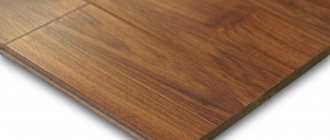A hydraulic bending machine is considered a more preferable tool compared to similar devices. User preferences are dictated by the convenience and high efficiency of hydraulic structures.
Meanwhile, the range of hydraulics for bending pipes surprises with the variety of designs, so plumbers have to choose even among the best devices of this type.
In this material we will tell you what kind of hydraulic bending machines they are, find out what rules should be followed when choosing, and also give instructions for working with the equipment.
Types of pipe benders with hydraulics
All existing hydraulic bending machines can be divided into two types:
- with mechanical drive;
- with electric drive.
Based on size and installation method, they are divided into mobile and stationary.
Hand-held systems include a tool that generates driving force using the user's muscle power. Figuratively speaking, this version of the tool looks simple - the design contains a hydraulic cylinder pump handle, which must be controlled manually.
Image GalleryPhotos from The main parts of a hydraulic bending machine are an oil pump with a piston that presses on the bending frame. To fix the pipe, the tool is equipped with stops. Using a hydraulic pipe bender allows you to bend the pipe as simply as possible, without deforming the cross-section, using minimal muscle effort. Even a small pipe bender allows you to bend pipes for installation of communications on a scale, industrial bent pipes from a certain type of material. The simplest and smallest tool is designed for manual deformation of copper and aluminum pipes. Bending of steel pipes for water and gas is performed on large stationary machines, the hydraulics and stability of which are designed for such operations; it is better to buy a machine with a model stamp. The presence of a ladder will provide a bend with a certain radius. The movable tool, which is used for repair work directly on site, is equipped with replaceable segments. They change according to the required bending radius Structural elements of a hydraulic pipe bender Simplify and facilitate the work Bending of water and gas pipes on an industrial scale Tube benders for copper and aluminum pipes Stationary tube benders for electric pipes Electric pipe bender equipment Tube bending machine with matrix molded tools Crimping tools for portable crimping tools
Automatic systems eliminate the use of manual force, but also do not exhibit any special difficulties in mechanization. The pump handle on the hydraulic cylinder is simply replaced with an electric drive.
Standard design of a pipe bender with a hydraulic cylinder. Many manual models from different manufacturers are built on this principle.
On such a pipe bender, the reciprocating movement of the sucker rod drives the electric motor.
Modified manual model of a pipe bending tool. Instead of a manual lever, a small, low-power electric motor is used here
Mobile structures include both manual and automated tools. As a rule, these devices are lightweight, compact, and easy to carry.
But the mobility and compactness of the devices somewhat limit their technical characteristics.
The mobile tool stands out for its small dimensions, relatively light weight and the ability to connect to the home power supply. However, there are technical limitations
Stationary pipe benders are also available in manual (lever) designs or equipped with an electric drive (often three-phase). Here we already notice powerful large-scale technology designed to perform the folding of strong and durable products.
Fixed structures are rigidly installed in one place without the possibility of quick transfer.
Stationary hydraulic bending machines are powerful systems capable of bending large diameter pipes. They are usually used for industrial and manufacturing needs
Design and principle of operation of a manual pipe bender
A manual pipe bender is quite simple in design and operating principle, so a home craftsman can easily handle its manufacture on his own.
The main elements in any pipe bending device is the pressure plate. A special mechanism presses on it with a certain force, and it transmits the force to the pipe being processed. To perform bending, the corrugation is installed between the pressure plate and several shafts, which act as stabilizers. Also, with the help of shafts, you can adjust the bending radius, since their position is adjustable.
So, to bend a pipe along a small radius, the shafts are placed fairly close to each other, and if it is necessary to increase the radius, then they are moved further away from each other.
The main elements in pipe benders are crescent-shaped shafts
To bend a round pipe, crescent-shaped shafts are installed on pipe benders.
Manual device
A homemade manual pipe bender, which is used to bend round pipes, consists of two machined pulleys, one of which is fixed motionless, and the second rotates around the first at a distance of the diameter of the pipe being processed. The principle of its operation is simple: a pipe is placed between two pulleys and by rotating the movable pulley, the round pipe is bent to the desired angle.
A manual pipe bender in the hands of a skillful owner may be needed at any time, therefore it is worthwhile to approach its manufacture thoroughly, so that it can bend pipes of various diameters.
This design will require two triple pulleys instead of single pulleys: one pair will be used for bending 1/2″ pipe, one for bending 3/4″ pipe, and one for inch pipe.
It is unlikely that you will be able to buy such devices on the market, so you will need to order them from a turning workshop. A recess is made at the ends of the shafts, which in size coincides with half the diameter of the corrugation.
A manual pipe bender consisting of two pulleys, one of which is fixedly fixed
Another important point that needs to be taken into account when manufacturing shafts is that the stationary pulley should be minimal in size, since the minimum possible bending radius of the product depends on this. The optimal size of the moving shaft is twice the diameter of the stationary one.
Some useful tips
There are several ways to obtain bent copper pipe. Each is good in its own way, but there are points that are always important to take into account, regardless of the chosen deformation method.
- The main requirement for the user when working is accuracy and attentiveness. Sudden movements will lead to excessive deformation of the pipe walls and their complete rupture.
- Parts made of annealed copper are the easiest to bend, so heating them takes a minimum of time.
- If the bend is not made where needed, you can reheat the workpiece and bend the product back. However, no one guarantees that the shape of the tube will be the same.
- If the surface overheats, the metal may simply begin to melt. It is unacceptable. The user must carefully follow the process from start to finish.
DIY pipe bender photo
How to make different types of pipe benders?
The principle of operation of pipe benders is different - you can influence a section of pipe in different ways. For example, a spring-type device will help deform polymer pipes due to pressure. Segmental devices will stretch them, giving them curvature.
The method of making a template pipe bender is accessible even to a beginner. To do this, you need to accurately draw a part of a circle of the required diameter (or other type of curvature). This hemisphere or other curve is drawn on a wooden blank, as in the photo of a homemade template-type pipe bender.
The resulting part must be fixed on a stable base along the plane (wall, table).
After the template stop is ready, you need to figure out how to use a pipe bender of this type. This is clear from the drawing - the pipe is secured between the template and the thrust beam.
By exposing the opposite end to a heated aluminum or thin steel billet, the desired bend is obtained. If it is necessary to obtain segments of different curvature, several suitable templates are made.
Make your own crossbow pipe bender with a punch
They are called pipe bending machines because of their similarity with a type of weapon such as a crossbow. Only instead of arrows, a hydraulic jack is used, acting on the profile or pipe, bending them. To construct a crossbow-type pipe bending machine, you will need to use a welding machine. To implement the idea you will need to perform the following steps:
- A frame of a cone-shaped design is manufactured. For this, corners, channels, profiles, etc. are used.
- Two steel plates are connected using movable rollers, through which the part is bent
- Inside between the rollers there is a jack on which a C-shaped shoe or punch is placed
- The shoe must have grooves to prevent the tube or profile from slipping
This is interesting!
You can buy a punch or make it yourself.
For manufacturing, you will need a tube from which the seat for the material to be bent is made. It is recommended to use such pipe benders for bending pipes, since other shapes of products will simply be deformed using such a machine. It is not difficult to make such a device, but you will need a hydraulic jack for this.
The video below shows how to make a crossbow pipe bender on your own.
https://youtube.com/watch?v=YoG0d5OqeCc%3F
Rating of the TOP 12 best pipe benders of 2021
| Place | Name | Price |
| TOP 4 best pipe benders by price/quality for 2021 | ||
| 1 | BISON EXPERT 23524-1/2 | Find out the price |
| 2 | Kraftool 23504-15 | Find out the price |
| 3 | BISON EXPERT 23524-3/8 | Find out the price |
| 4 | Kraftool EXPERT MINI 23505-1/2 | Find out the price |
| TOP 3 best lever pipe benders | ||
| 1 | BISON EXPERT MINI 23526-10 | Find out the price |
| 2 | Kraftool 23502-H9 | Find out the price |
| 3 | BISON EXPERT 23523-12 | Find out the price |
| TOP 3 best spring pipe benders | ||
| 1 | BISON 23531-10 | Find out the price |
| 2 | BISON MASTER 23531-12 | Find out the price |
| 3 | BISON 23531-18 | Find out the price |
| TOP 2 best crossbow pipe benders | ||
| 1 | Kraftool 23501-H6 | Find out the price |
| 2 | BISON 23521-H6 | Find out the price |
How to make rollers for a pipe bender
Difficulties often arise with making homemade pipe benders, and the main problem is how to make the rollers. To make rollers for a pipe bending machine, you will need to use the following parts:
- Bearings are an ideal option, as they have an inner and outer race, through which the part can be secured to the base. Bearings are used for the manufacture of roller pipe bending machine
- Rollers, for example, a tensioner pulley from a car. Round rollers are used for the manufacture of machines with a clamping mechanism. A tensioner roller from a car is used as a break-in tool.
- Car hubs are a good option for making movable rollers. Below is an example of making a machine for bending pipes from car hubs
To make rollers on a rolling machine, it is necessary to use bearings of the appropriate diameter, as well as a steel tube. The manufacturing principle is as follows:
- Two bearings are connected to each other by means of a steel tube, the diameter of which is equal to or less than the internal hole of the part
- The steel tube is welded to the inner race of the bearings, resulting in a finished roller
- The outer race of the bearing is secured to the base of the machine using a weld seam
The result is reliable rollers for the pipe bender, through which the pipe moves when it is deformed.
Distance from the crimping point to the bend
Brake pipe designs typically have short distances from the start of the pipe to the first bend and from the final bend to the end of the pipe. This is eliminated by manufacturing special sliding shoe inserts, special rollers and clamps, as well as collets of a special design adapted to a specific brake pipe.
Pipe bending machines made in Russia, best suited for bending brake pipes:
- Automatic three-axis pipe bender CE-30 PARTNER.3Х
- Semi-automatic pipe bending machine 3-axis CE-30 PARTNER
- Manual pipe bender for brake pipes 3-axis CM-30/3 PARTNER
- Automatic three-axis pipe bender CE-51 MASTER.3Х
- Semi-automatic pipe bender 3-axis CE-51 MASTER
Main rules
The main causes of defects in pipe bending are incorrect (usually too small) bending radius and a short technological shank (“tail”), the distance from the end of the pipe closest to the bend to its beginning. The “tail” is needed not only for reliable fastening of the pipe, the “tail” is also an absorber for the release of technological stresses. A perfectly correct pipe bender can produce a wave or a defect (parasitic bend).
The rules for choosing the bending radius of the pipe RIZG and the length of the technological shank L are summarized in the table:
IZGIZG
- If the difference between the real and the nearest tabulated values of the pipe diameter P is more than 10%, the values of the initial calculated values are calculated by interpolation. Otherwise, we take the nearest one.
- The tabulated RIZG is reduced to the relative value rIZG, i.e. It is expressed in pipe diameters D or heights H.
- For pipes with a diameter of up to 10 mm, 1 is subtracted from rIG.
- For pipes with a diameter of 11 to 15 mm, 0.85 is subtracted from rIG.
- For pipes with a diameter of 16 to 24 mm, 0.75 is subtracted from rIG.
- For pipes with a diameter of 25 to 40 mm, 0.65 is subtracted from rIG.
- For pipes with a diameter of more than 40 mm, 0.5 is subtracted from rIG.
- Convert the relative rIZG back to the numerical (millimeter) RIZG.
- From the obtained value of RIZG, take the nearest practically convenient larger one.
Example: you need to bend 24x24x1.5 from a steel pipe, i.e. already classified as thin-walled, complex semi-arches for a flower house or hut. The structure is non-residential, light, the complex semi-arch is not a load-bearing structure (see below), i.e. "plumbing" wave and taffy are acceptable. We take data for the pipe H=25. According to the table we find rIZG = RIZG/H = 80 mm/25 mm = 3.2. Subtract the correction (for pipe H=25!): 3.2 – 0.65 = 2.55. Convert back to millimeters (again according to the table H=25!): 2.55x25 = 63.75 mm. That is, if we take a new bending radius of 65 mm instead of the “defect-free” 80, then the selection of bending devices and work will be simplified, the possibilities of artistic expression by the shape of the structure will increase, and there will be no visible and/or dangerous defects in the finished structure.
Simple - radius
A specific pipe bender is designed for a bend radius within certain limits. But to select a design prototype, you immediately need to know only its very general meaning:
- for small radii RIZG<5D (or 5H);
- for average radii 5IZG<20 D or H;
- for large radii 20D(H)IG;
Manufacturing of hydraulic machine
This process will be quite labor-intensive. The structure will consist of:
- slats;
- injection device;
- pipe stops;
- hydraulic cylinder.
Before you make a pipe bender yourself, you will need to prepare:
- metal plates;
- rollers;
- channel;
- shoe;
- hydraulic jack.
The latter should be designed for approximately five tons. Initially, the structure is made of a channel, which is equipped with a shoe and rollers. At the next stage, it is necessary to make the frame of the machine from a similar material. The last platform is secured with metal plates. You will need to install a jack on the shelf. The structure is secured with bolts, then the handle is fixed.
If you decide how to make a pipe bender yourself, you must follow special technology. At the next stage, the rollers are installed in a rectangular channel. They are fastened with bolts. The shoe is installed below. These elements will determine the bend radius. At this point we can assume that the machine is ready.
The bending technology will look like this. The pipe must be inserted into the shoe and secured on both sides. Next comes the jack, the handle of which must be slowly rotated. With a hydraulic drive you will create force transmitted to the roller. The product will begin to bend at a certain angle. You can stop the machine at any time.
In order to remove the pipe, you should turn the handle in the opposite direction a few turns. Before you make a pipe bender yourself, you should know that you can change the geometric proportions of such products at home in a variety of ways. But you must choose the most suitable method for yourself. If you don’t plan to do such work on a continuous basis, perhaps sand or freezing techniques will suit you.
Electric profile benders
Manufacturers also equip equipment for bending corrugated pipes with an electric drive. This machine for a profile pipe is a professional device that allows you to bend the workpiece as accurately as possible in accordance with the given dimensions. Electric profile bending machines are used by specialized companies for the serial production of bent parts of metal structures. Its customizable rollers are designed for bending metal products, which can be made from various steel, copper, aluminum alloys and so on.
High-quality steel is used in the manufacture of electric pipe benders. Rolling rollers are made from it. They are highly wear resistant. Therefore, they do not have to be replaced frequently with new parts.
Electric pipe benders for corrugated pipes are not mobile devices. They are stationary equipment. For their operation, a constant connection to the electrical network is required. Such machines are installed in production shops and forging plants.
The most popular options for homemade pipe benders
The most technologically advanced and versatile are pipe benders that operate on the rolling principle. It is these devices, often equipped with an electric drive, that are used by professionals who are constantly faced with the need to bend pipes made of various materials, including stainless steel.
Homemade pipe bender option
The design of such a device is based on three rotating rollers, one of which is a pressure roller. Thanks to the gradually increasing pressure of the pressure roller and rolling repeated for each new position of the roller, bending of the pipe is carried out in the most gentle way, its walls are subjected to tensile manipulations very evenly.
Homemade electric pipe bender, made by yourself
Computer model of a pipe bender Computer model of a pipe bender Drawing of a clamping screw Drawings of shafts Drawings of shafts Drawing of a ring Pipe bender components Pipe bender components Assembly process Motor drive Motor drive View from the shafts
The most important thing that such a pipe bender allows you to do is adjust the bending radius of the workpiece. There can be several design options for such a universal device: on the elements of the frame structure there are rotating thrust rollers, as well as a wheel with which the pipe is rolled; The side supporting surfaces and the base are made of sheet metal, and a screw drive is used to move the pressure roller. On devices of the second type, the minimum bending radius can be changed, which is achieved by changing the position of the support rollers.
The shafts of this pipe bender allow you to comfortably work not only with round pipes, but also with profile ones
The supporting structure for such a pipe bender can be made of wood. The roller axles, rod, fasteners and handle for turning the rollers, which can also be made of wood or polymer materials, will remain metal.
Above we looked at pipe benders in which the pulling process is ensured by rotating the pressure roller. There is also a category of devices in which the movement of the pipe is controlled by rotating support rollers.
Option with screw jack
An electric or manual pipe bender, in which rotation is transmitted to one roller, has limited capabilities. A pipe bender in which both support rollers rotate is characterized by a more complex design, since it is necessary to transmit rotation to two elements at once.
More convenient, according to many experts, is a pipe bender in which the pressure roller is located at the bottom. Some craftsmen are of the opinion that it is much easier to control the bending of pipes on it; they are not blocked by the upper supporting structure.
Pipe bender with electric motor and drive via two chains
Any device for bending pipes is a fairly simple device, the operation of which is based on the elementary laws of mechanics. If the need for bending stainless steel, metal-plastic pipes, as well as pipes from other materials arises infrequently, then you can limit yourself to a manual device.
What types of devices are there for transforming pipes?
Transforming the curvature of a thin-walled pipe of small diameter is a completely accessible stage in obtaining metal blanks for frame-type structures.
It is enough to look at the drawings and photos of pipe benders, and it will become obvious that structurally they have a lot in common:
- base (support, emphasis);
- frame or frame (open or closed);
- strips, pipe stops or holders;
- screws or vice for fastening;
- injection, mechanical or operating device (alternative power part).
The forming of aluminum, standard steel and metal-plastic pipes can be done using the simplest manual template-type device.
Most pipe benders resemble a compact machine, but they have their own classification:
- by type of impact on pipes (running, winding, drawing, rolling);
- moving if possible (stationary and portable).
The drive type is also different:
- electric;
- manual;
- hydraulic;
- electrohydraulic.
If you use an electric drive or a hydraulic jack, it will take on the entire power load, saving time and effort. But its construction requires at least basic knowledge and experience in constructing household machines for metal processing. But such devices are several times cheaper than ready-made devices and their repeated rental.
The most popular and simplest in design are manual pipe benders of the template type. By bending around a profile or regular pipe along part of its circumference, a section of pipe is transformed at a given angle or the required curvature.
Making a manual roller model
Making a manual pipe bender with your own hands is made from steel parts alone without the use of special mechanical devices. This device is designed for local pipe bending. Direct manual force is used to deform the profile, so the pipe bender must be equipped with a long and strong lever.
Next, we will consider the process of manufacturing a two-roller pipe bender attached to a support frame. Tool sizes may differ from those suggested, depending on needs and materials.
Required materials and tools
Pipe deformation is a labor-intensive process that requires good and durable materials, otherwise, instead of the profile, the working tool itself can be bent.
To make a mechanical manual radial pipe bender you will need:
- Welding machine.
- Two rollers made of durable steel (eg 1045 grade) that have been pre-turned. The diameter of the larger one is 100 mm, and the smaller one is 60 mm. Both are 35 mm thick and have a 0.5 inch outer cavity radius.
- Steel pipe with a diameter of at least 1.5 inches with a thick wall (minimum 3 mm). It will serve as a lever, so its minimum length is 1.5 meters.
- Four steel strips measuring 15 x 6 cm and 4-5 mm thick for fixing the base of the pipe bender in a vice, supporting the pipe and making a handle. You will also need 20-25 cm of steel plate with a width of 60 mm and a thickness of 3 mm.
- Two bolts: the first is 0.75" in diameter and 60mm long for the large roller, and the second is 0.5" in diameter and 40mm long for the small roller.
- Steel plate 300 x 300 mm and a minimum thickness of 3 mm.
- Vise.
During the work process, you may also need other general household tools: a hammer, files, sandpaper, a ruler, etc. The above rollers are designed exclusively for pipes with a diameter of 1 inch, but by eliminating the circumferential recess from them, you can get a universal tool for bending a metal profile.
Bending methods
Methods for giving a curved shape to a copper pipe are divided into two categories:
Industrial flexible tube bending refers to the use of special equipment - pipe benders. The most common are hydraulic and mechanical (manual). The former make it possible to minimize human physical effort, have replaceable nozzles for selecting a suitable bending diameter, and are used for large copper tubes. The latter are compact, work using human muscle power, and also have replaceable attachments in the form of a semicircle.
When repairing or installing copper pipelines, you don’t always have a pipe bender at hand. Therefore, users make do with improvised means.











